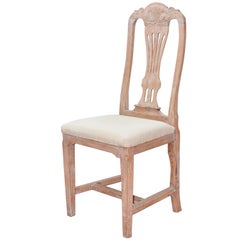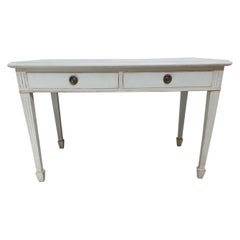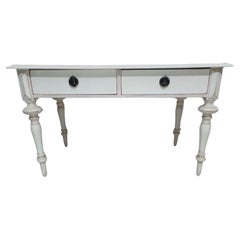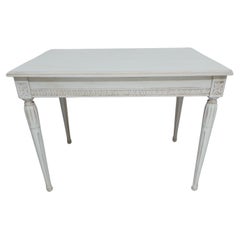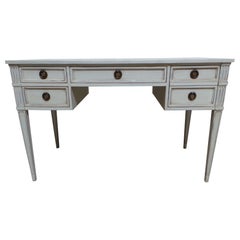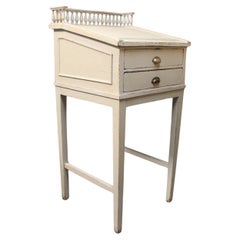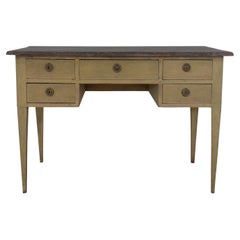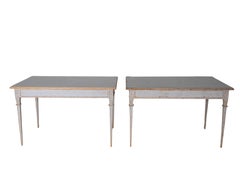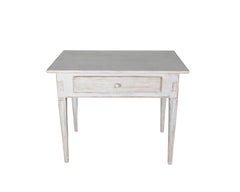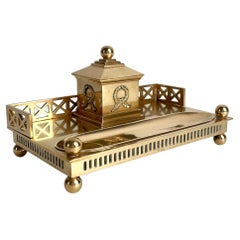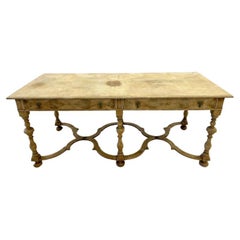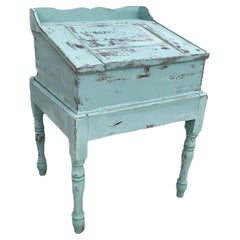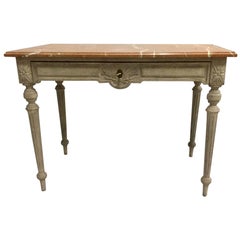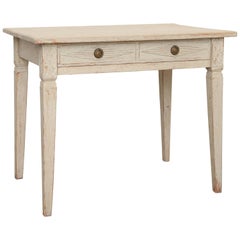Gustavian Style Desk
Antique Early 19th Century Swedish Gustavian Side Chairs
Wood
Vintage 1950s Swedish Gustavian Desks and Writing Tables
Wood
Antique 1880s Swedish Gustavian Desks and Writing Tables
Pine
Vintage 1940s Swedish Gustavian Desks and Writing Tables
Wood
Vintage 1940s Swedish Gustavian Desks and Writing Tables
Wood
Antique 1840s Danish Gustavian Desks and Writing Tables
Wood
Antique Early 1900s Swedish Gustavian Desks and Writing Tables
Pine
Antique 19th Century Swedish Gustavian Desks and Writing Tables
Pine
Antique 19th Century Swedish Desks and Writing Tables
Wood
Early 20th Century Swedish Gustavian Desk Sets
Brass
Antique 1860s Desks and Writing Tables
Wood
Antique 19th Century American Gustavian Desks
Wood
21st Century and Contemporary English Gustavian Desks and Writing Tables
Pine
Antique Mid-19th Century Swedish Gustavian Console Tables
Bronze
Antique Early 19th Century Swedish Gustavian Secretaires
Brass
Antique Late 19th Century Spanish Gustavian Console Tables
Wood, Paint
Antique Mid-19th Century Swedish Romantic Side Tables
Pine
Antique Late 19th Century Swedish Gustavian Secretaires
Bronze
Antique 19th Century Swedish Gustavian Dining Room Tables
Paint
Recent Sales
Antique Late 19th Century Swedish Gustavian Desks and Writing Tables
Marble
Antique Mid-19th Century Swedish Gustavian Desks
Wood
Antique Late 19th Century Swedish Gustavian Secretaires
Wood
Vintage 1960s Swedish Gustavian Desks and Writing Tables
Wood
Vintage 1930s Swedish Gustavian Desks
Wood
Vintage 1930s Swedish Gustavian Desks and Writing Tables
Wood
Antique 1870s Swedish Gustavian Desks and Writing Tables
Wood
Vintage 1920s Swedish Gustavian Desks
Wood
Antique Late 19th Century Swedish Gustavian Desks and Writing Tables
Wood
Antique 19th Century Swedish Gustavian Desks and Writing Tables
Wood
Antique Late 19th Century Swedish Gustavian Desks and Writing Tables
Brass
Antique 19th Century Swedish Desks and Writing Tables
Wood
Antique 19th Century Swedish Gustavian Desks and Writing Tables
Brass
Antique 1890s Swedish Gustavian Desks and Writing Tables
Brass
Antique Mid-19th Century Swedish Gustavian Desks and Writing Tables
Wood
Antique Late 19th Century Swedish Gustavian Desks and Writing Tables
Wood
Antique Mid-19th Century Swedish Gustavian Desks and Writing Tables
Wood
Vintage 1920s Swedish Gustavian Desks and Writing Tables
Wood
Antique Early 1900s Swedish Gustavian Desks and Writing Tables
Wood
Vintage 1920s Swedish Gustavian Desks and Writing Tables
Wood
Vintage 1960s Swedish Gustavian Desks and Writing Tables
Wood
Vintage 1930s Swedish Gustavian Desks and Writing Tables
Wood
Antique Early 1900s Swedish Gustavian Desks
Brass
Antique Late 19th Century Swedish Gustavian Desks and Writing Tables
Pine, Paint
Antique 1860s Swedish Gustavian Desks
Wood
Antique 1870s Swedish Gustavian Desks
Wood
Vintage 1930s Swedish Gustavian Desks
Wood
Antique Early 18th Century Swedish Gustavian Desks and Writing Tables
Pine
Antique 19th Century Swedish Desks and Writing Tables
Wood
Vintage 1930s Swedish Gustavian Desks and Writing Tables
Wood
Early 20th Century Swedish Gustavian Desks and Writing Tables
Wood
Antique 19th Century Swedish Gustavian Desks and Writing Tables
Pine
Antique 19th Century Swedish Gustavian Desks
Wood
Antique Early 19th Century Swedish Gustavian Desks and Writing Tables
Pine
Late 20th Century American Gustavian Desks and Writing Tables
Wood, Lacquer
Antique 19th Century Swedish Desks and Writing Tables
Brass
Early 20th Century Swedish Gustavian Desks and Writing Tables
Brass
Vintage 1930s Swedish Gustavian Desks
Wood
Antique 19th Century Swedish Desks
Vintage 1940s Swedish Gustavian Commodes and Chests of Drawers
Maple
Antique Early 19th Century Swedish Gustavian Secretaires
Wood
Antique 1780s Gustavian Secretaires
Brass
Antique 19th Century Swedish Gustavian Secretaires
Brass
Early 20th Century Swedish Gustavian Sideboards
Brass
Antique 18th Century and Earlier Swedish Gustavian Side Chairs
Wood
Antique Early 1900s European Gustavian Desks and Writing Tables
Oak
Antique 1880s Swedish Gustavian Desks and Writing Tables
Pine
Antique Mid-19th Century Swedish Gustavian Desks and Writing Tables
Brass
Antique Early 19th Century Swedish Gustavian Desks and Writing Tables
Pine
21st Century and Contemporary Swedish Gustavian Desks
Brass
20th Century Swedish Gustavian Desks and Writing Tables
Wood
Antique Late 19th Century Swedish Gustavian Desks and Writing Tables
Brass
Antique Mid-19th Century Swedish Gustavian Desks and Writing Tables
Wood
20th Century Swedish Gustavian Desks and Writing Tables
Wood
21st Century and Contemporary Swedish Gustavian Desks
Wood
Antique Mid-19th Century Swedish Gustavian Desks and Writing Tables
Pine
Antique 19th Century French Gustavian Desks and Writing Tables
Wood
People Also Browsed
Late 20th Century Moroccan Moorish Chandeliers and Pendants
Metal
2010s American Floor Lamps
Iron
21st Century and Contemporary Italian Classical Greek Stone Sinks
Marble
Vintage 1910s American American Classical Wall Lights and Sconces
Silver Plate, Bronze
Vintage 1970s French Space Age Architectural Elements
Fiberglass, Polyester, Polystyrene
Vintage 1970s German Mid-Century Modern Wall Lights and Sconces
Metal
Vintage 1940s Swedish Scandinavian Modern Chandeliers and Pendants
Brass
21st Century and Contemporary Dining Room Tables
Wood, Oak
21st Century and Contemporary Vietnamese Empire Center Tables
Wood
Antique 17th Century Italian Baroque Dining Room Tables
Wood, Walnut
21st Century and Contemporary Organic Modern Wingback Chairs
Linen, Wood, Birch
21st Century and Contemporary Sofas
Linen, Oak
Antique Mid-19th Century Swedish Folk Art Cabinets
Wood, Paint
Antique Late 18th Century English Georgian Tea Caddies
Mahogany, Satinwood
Early 2000s American Chippendale Wingback Chairs
Mahogany
21st Century and Contemporary Organic Modern Cabinets
Elm, Wood
Gustavian Style Desk For Sale on 1stDibs
How Much is a Gustavian Style Desk?
A Close Look at Gustavian Furniture
With clean lines and muted colors, antique Gustavian furniture is understated and elegant. It represents a more restrained version of the transition from Rococo to neoclassicism that was happening in France under Louis XVI. The style developed under Swedish King Gustav III, who reigned from 1771 until his assassination in 1792, and his son Gustav IV, who ruled until 1809. Although Gustavian furniture is mostly used to refer to pale painted cabinets, commodes, armchairs and other items, it involved a range of influences.
Gustavian-style furniture was inspired by discoveries at Pompeii and Herculaneum as well as the grandeur of European palaces like Versailles, with local softwoods such as pine and birch. There was also an emphasis on natural light; crystal chandeliers and large mirrors played a role in radiating the fleeting daylight of winter, giving it a distinctive aesthetic.
Where earlier furniture was curvy and florid, this new era was more architectural, with tapered and fluted legs and rectangular and oval shapes. Luminous gilt contrasted with the palette of soft blues on upholstery and painted surfaces. Leading furniture builders included Gottlieb Iwersson, Louis Masreliez and Erik Öhrmark. The latter, a French-born Swedish decorator, designed the Sulla chair, a seat that was demonstrative of technical skill and precise craftsmanship and drew on Greek klismos chairs. Masreliez’s Sulla chair was made by Öhrmark and featured decorative ornamentation produced by Jean-Baptiste Masreliez, Louis’s younger brother.
While the wealthy had furniture carved with neoclassical details like scallops and rosettes, more affordable options were adorned with faux finishes that mimicked marble and stenciled patterns. The simple elegance of Gustavian furniture would have a long impact on Swedish design, informing the 20th-century appreciation for function and form. In the 1950s, IKEA mass-produced copies of a Gustavian commode designed by cabinetmaker Georg Haupt, who created pieces for the Royal Palace, making the furniture a fixture of everyday Swedish life.
Find a collection of antique Gustavian seating, tables, decorative objects and other furniture on 1stDibs.
- What is a mission style desk?1 Answer1stDibs ExpertOctober 12, 2021Mission style desks feature sturdy slats and stable legs. Although mission furniture is often made from oak, it comes in a variety of other wood types, as well. The straight lines of this furniture style are known for highlighting the natural grains in the wood. Shop a range of antique and vintage mission style desks on 1stDibs.
